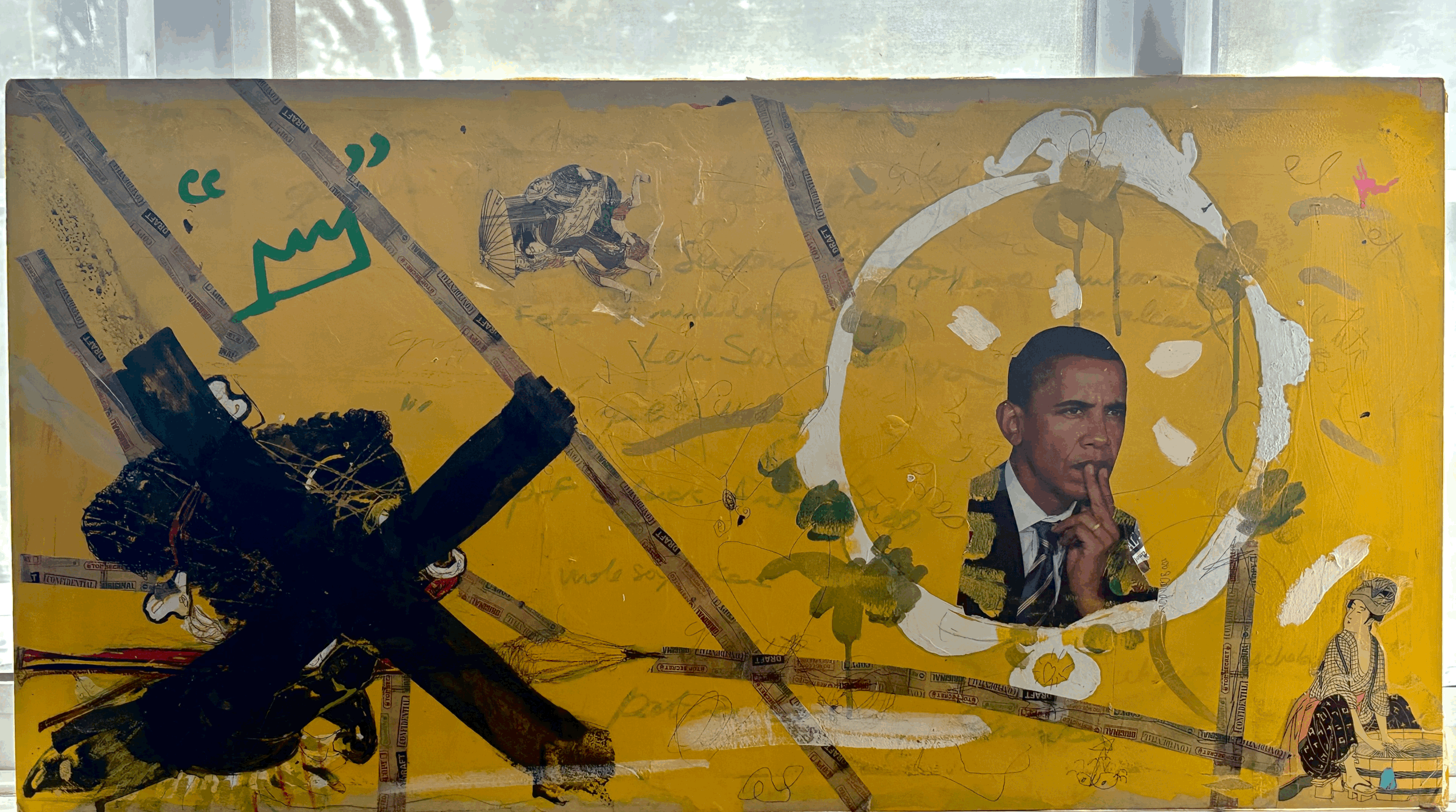The left side of the canvas offers a violent counterpoint: a darkened figure, heavily gestural, is obscured by a heavy black X. This obliteration resists easy interpretation. Is it censorship, erasure, sacrifice? The gesture of the cross recalls both political protest and art-historical references—Basquiat’s graphic language, Malevich’s suprematist forms, even the Christian crucifixion iconography. It conveys negation but also insists on presence: we cannot see clearly, but we cannot ignore it.
Scattered throughout are fragments of collage and line: a green crown-like glyph that nods knowingly toward Basquiat’s visual lexicon of kingship and identity; a Japanese woodblock-style figure in the bottom right, invoking cross-cultural references and the persistence of art history as commodity and quotation. Diagonal strips cutting across the surface add a sense of fragmentation, as though the painting were sutured together from conflicting narratives. Scribbled words and markings hover faintly beneath the painted layers, like a palimpsest of half-erased thoughts, keeping the surface alive with unfinished discourse.
What emerges is not a singular message but a field of contradictions: reverence and critique, visibility and erasure, power and vulnerability. The work resists passive viewing, compelling the audience to confront the unstable meanings of its symbols. Is Obama here sanctified or trapped? Is the X an act of protest or protection? The artist deliberately withholds resolution, reflecting the fractured, often contradictory narratives of race, politics, and global culture.
In its raw execution, the piece resonates with the urgency of political street art, yet its layered references situate it firmly within the discourse of contemporary painting. It is not merely a portrait of power but a meditation on representation itself: who is given a halo, who is crossed out, and who controls the visual grammar of history.
